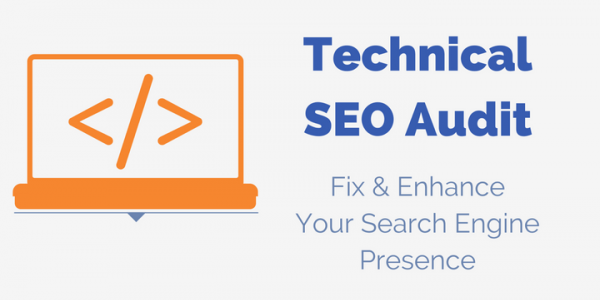A website plays the most important role when we talk about brand recognition. However, there are many times that your website is not getting ranking or performing on Google, so to understand the technical aspects (vulnerabilities and loopholes) of the website’s SEO, we need to perform a technical SEO audit.
However, while performing a technical SEO audit, you need to know a number of things.
A Technical SEO Audit provides us with all the issues present on the web pages, and by fixing those issues, we can improve search engine ranking. So here is a quick step by step guide to perform SEO audit on the site and individual pages.
Let’s start with a Technical SEO Audit strategy.
Before starting to do SEO Audit, we need to structurize our audit to achieve desire goals. We can get better insights by performing the right audit. Some of these include getting an insight into your competitors, analyzing keywords, improving the site’s technicality, and many more.
Here are the 4 core areas:
- Technical SEO Analysis
- On-page SEO Analysis
- Off-page SEO Analysis
- Competitor’s SEO Analysis
- Technical Analysis
The primary focus that we need to analyze is how the website works to make sure that Google bot can Index and Crawl our webpages correctly. Technical analysis helps us in getting better accessibility and indexability of the website.
Analyze your website with these Major Technical Factors:
- How many pages are crawled by Google
- Pages with Low page speed
- Mobile-Friendly Status
- Pages blocked by robots.txt
- Pages with having Noindex and Nofollow Tags
- Canonical Tag Errors
- Pages with Ajax and I-Frames

Crawling Issues
If the website has a high number of issues, we need to take a special look into all errors and fix them. These issues should not be avoided at all costs.
- On-Page Analysis
After done with the website’s technical part, we need to start analyzing the on-page SEO factors. On-Page errors are related to content and webpage structure.
For Content Issues
With On-Page SEO Analysis, we have to work on the content analysis that accomplishes SEO requirements. The idea is to create/analyze content that is generic and speaks for the masses. Unique and user-friendly content can be index faster from an SEO perspective.
Things need to consider while working on content:
- Need to optimize pages without text or paragraphs
- Need to optimize Pages without proper keyword optimization
- Need to optimize content that appears on several pages
- Need to optimize Duplicate Content
- Need to optimize pages for the same keywords
- To write good content, you must work on writing lengthy articles that target LSI keywords. Moreover, optimize the content with related images.

Individual Webpage Issues
As the name suggests, individual page issues mean understanding the structure and content of every page. When we talk about ranking individual pages, content does play an important role. Therefore, it is important to write content with a good structure keeping in mind the user experience. It will help you in getting a better SEO ranking and also get more shares.
Analyze and fix the following issues on the individual pages:
Meta Tags and Page Attributes
- Problems with Meta Titles
- Problems with Meta descriptions
- Duplicate/Short/Long Page titles
- Duplicate/Short/Long Meta descriptions

Page Optimization and Guidelines
- Problems with H1 Tags
- Problems with strong and bold tags
- Pages with I-frames
- Images with missing alt attribute
- Pages with a big file size
- HTTP content on HTTPS pages
URL Optimization
- URL parameters
- Session ID in URL
- Too many subdirectories
- URL too long
- Questionable URLs
Off-Page analysis
The first two steps are all about how the search engines will perceive the website. However, the off-page analysis is all about how powerful the website domain is. The off-page techniques all depend upon how willing you are to rank your website through off-page skills.
So, let’s see how it is done.
The first step shall be building trust. When we talk about Google, trust is an important factor in establishing a good ranking. By practicing white hat SEO techniques, Google establishes a good amount of trust in your website.
Here are things you need to consider while creating backlinks:
- Build Backlinks from Relevant Sites
- Build Backlinks from High Trust Flow Sites
- Build Backlinks from High Citation Flow Sites
- Build Backlinks from High PA DA Sites
Let’s have an example:


Competitive Analysis
Once everything is sorted it is time to get started with competitive analysis. So, in this step, we will have to utilize time for keyword research. It will indeed help us in determining the competition as well.
Here is how to do competitors analysis:
We can use various SEO tools to search for keywords. We use SEMrush Tool to analyze the competitors.

Once we fetch the competitor’s organic keywords list, we also have to determine the relevant keywords that can further escalate our website’s traffic. We shall look for keywords that people are more likely to search about.

Moreover, if we want to beat your competitors, you will have to look for high-quality backlinks and perform well on the search engines.
Key Takeaway
SEO auditing helps determine the loopholes in your site, and it will ultimately help you improve other things as well. Auditing will help you improve the website and increase the traffic on the search engine and increase sales. However, these methods can surely help you in website audit; always make sure to use white hat SEO techniques because it will only hamper your site’s ranking.
Hire an SEO Company today to do an SEO Audit of your site.

This Post Has 0 Comments